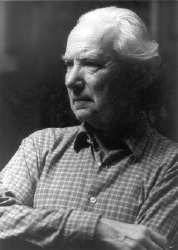LOSSONCZY, Tamás
(1904, Budapest - 2009, Budapest)


Tamás Lossonczy was born August 12, 1904 in Budapest. Albeit his greatest interest was in drawing, after graduating from secondary school he began studies in law. A year later, however, he quitted and took an entrance examination to the Hungarian Academy of Fine Arts. At first he studied under the rather conservative guidance of István Bosznay, but subsequently he requested to be transferred to János Vaszary's class, whose open-minded artistic approach had a liberating impact on his work. During the 1920s Lossonczy made several visits to Paris, where he had the opportunity to witness the latest artistic tendencies of the period, and also developed a personal acquaintance with Piet Mondrian. In the course of his travels, on the invitation of the architect Sándor Bodon he also visited The Netherlands, where he met the painter Vilmos Huszár. On his return to Hungary, during 1929-31, he studied interior design at the Hungarian Academy of Applied Arts under Gyula Kaesz, and later worked at the architectural studio of Farkas Molnár. During this period he was inclined to concern himself with the issues of architecture rather than those of painting.
In 1934 he became a member of the Group of Socialist Artists. In 1938 he met his future wife, Ibolya Lossonczy, who drew the influential art historian Ernő Kállai's attention to his work. In 1941 the couple organised the first of a series of studio exhibitions in their flat at No.1 Károly Keleti Street, Budapest. The pieces exhibited on this occasion, as well as numerous other paintings, were destroyed when the house was bombed towards the end of the Second World War. He participated in the exhibition New Romanticism ["Új romantika"], curated by Ernő Kállai in 1943, and in the 1st Hungarian Group Exhibition of Abstract Art ["Elvont művészet I. magyar csoportkiállítása"]. He was a member of the European School ["Európai Iskola"], the Avant-garde Artists of the Danube Valley ["Dunavölgyi Avantgárdok"], and the Hungarian Group of Concrete Art ["Konkrét művészet magyarországi csoportja"]. In 1947 he and his wife exhibited their works at the Gallery to the 4 Cardinal Points ["Galéria a 4 Világtájhoz"]. In 1954 he was expelled from the Association of Hungarian Artists. Between 1957 and 1968 he taught drawing at a Budapest industrial school. For the first time in many years, he had a small solo show at the Adolf Fényes Gallery in 1970, to be followed in 1979 by an exhibition held at the Műcsarnok/Kunsthalle, Budapest.
He is a founding member of the Széchenyi Academy of Letters and Arts, established by the Hungarian Academy of Sciences in 1992. In 1994 he was recipient of the Kossuth State Award. The following year a retrospective exhibition of his works was held at the Ernst Museum, Budapest. His large-scale mosaic at the EUR-Magliana metro station in Rome, Italy, was inaugurated in 1998.
Several years after his wife had died, he got married again and started to work with revitalised energies. In 2003 Lossonczy's second wife, Éda Pál opened a gallery devoted to his oeuvre, the Paris blue Salon in Budapest. Tamás Lossonczy has remained active up to his death, creating paintings, drawings, paper sculptures and collages.
